Kelley Jones, Mike Allred, Dan Slott, Dave Gibbons, Paul Levitz and many more…
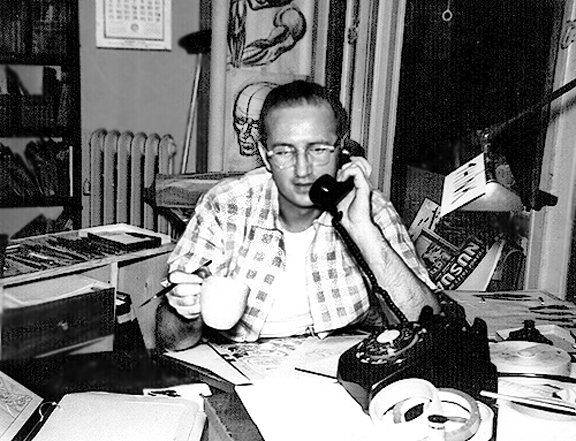
—
UPDATED 11/2/18: Steve Ditko was born Nov. 2, 1927. He died in July at the age of 90. Among our many tributes (click here for the complete index) was this piece, which we’re re-presenting today. — Dan
—
Few have felt Steve Ditko’s creative impact more than those who followed him into the field of comics.
We asked a number of today’s top creators for their remembrances of one of the industry’s giants.
Their responses, fittingly, capture Ditko’s inscrutability and mystique:
—
Kelley Jones (artist, Batman, Deadman)
The best summer I ever had as a kid was in 1976.
It was because after two years of hunting, I was able to finally acquire all 38 issues of Ditko’s run of Spider-Man plus the two annuals. (I couldn’t afford Amazing Fantasy #15, so Origins of Marvel Comics by Stan Lee with the reprint would have to do!)
I read one issue a day and shared the growing excitement in the letters pages from 13 years earlier. (God, I miss those!). I had no friends into comics then, so I was alone with the incredible thrill of discovering the genius of Ditko. I pored over the art, I copied the pin-ups and put them on my wall.
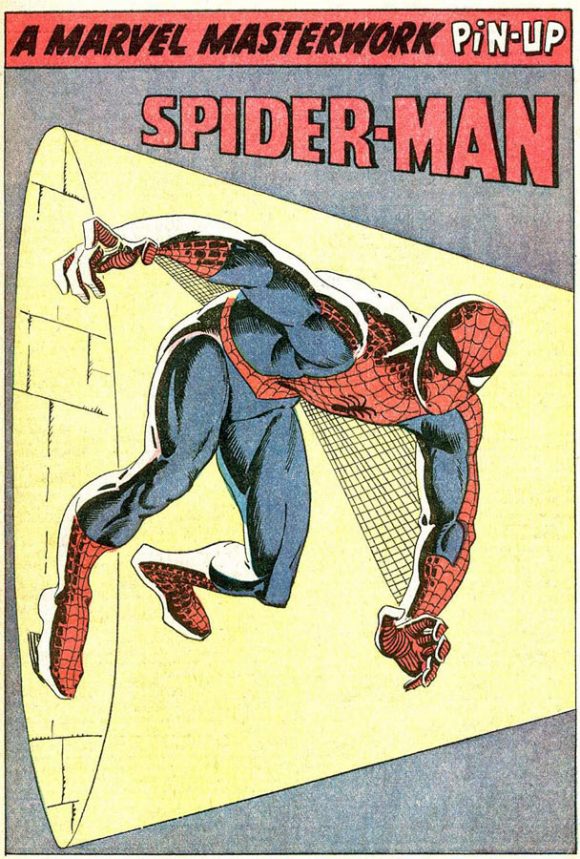
I still get excited when thinking of my favorite scene in the run — it knocked me out then, as now.
Everyone had turned against Spider-Man and the only person to stay loyal was Peter Parker’s high school bully and nemesis, Flash Thompson. Flash was the president of his high school’s Spider-Man fan club. All the members had quit and only Flash remained. Peter rags on Flash about Spidey — so Flash belts him. And Peter, like me when I read it, thought he could never dislike Flash again.
Because of scenes like this, and many, many others, I finished reading all 38 issues of Spider-Man thinking it was the best run of comics ever — and I still think it was as close to perfect as our medium has ever gotten.
I followed reading this masterpiece with a book my aunt bought me for my birthday — The Lord of the Rings, but that’s another story!
Like when Christopher Lee died, Ditko’s death marks the end of something for me.
And like Flash Thompson, I will always be in Steve Ditko’s fan club.
—
Dave Gibbons (artist, Watchmen)
Ditko was one of the great visionary comic-book artists, with an unmistakable style and an innate ability to construct often bizarre, yet always coherent, versions of reality that drew the reader in and kept them there with his storytelling genius.
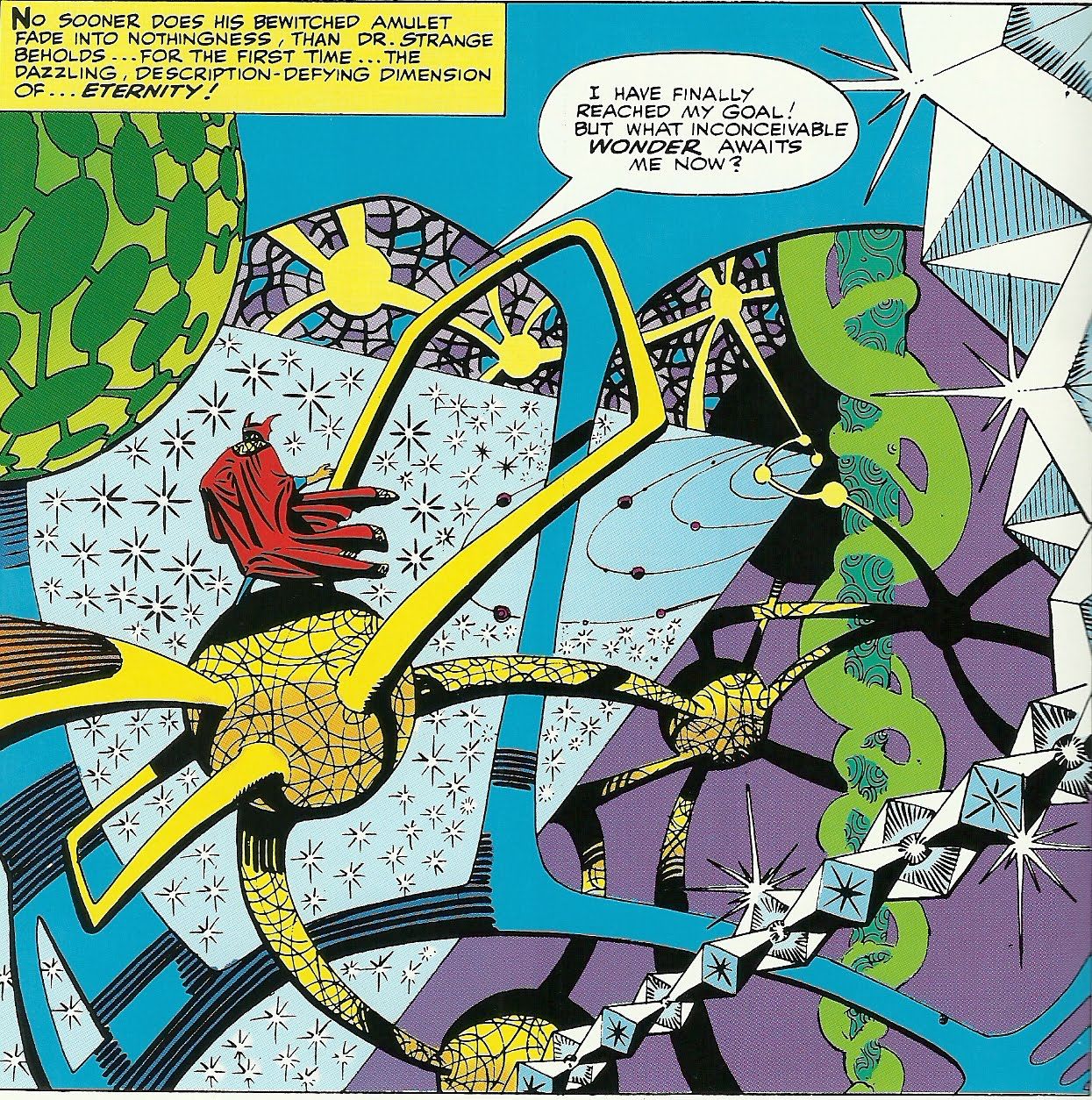
—
Mike Allred (writer/artist Madman, Batman ’66)
One of the greatest of the greatest. One of the artist’s artists whose influence is impossible to measure.
So odd, and curious, how he chose to remove himself from the mainstream, shunning photographs and embracing a weird anonymity. Our industry’s J.D.Salinger. He certainly seemed to live his life exactly the way he wanted to.
But all that aside, a major architect of the comic-book industry who has personally been a gigantic influence on my art.
I go back to his work again and again for a source of energy, enthusiasm, entertainment and inspiration.
Thank you, Steve Ditko!
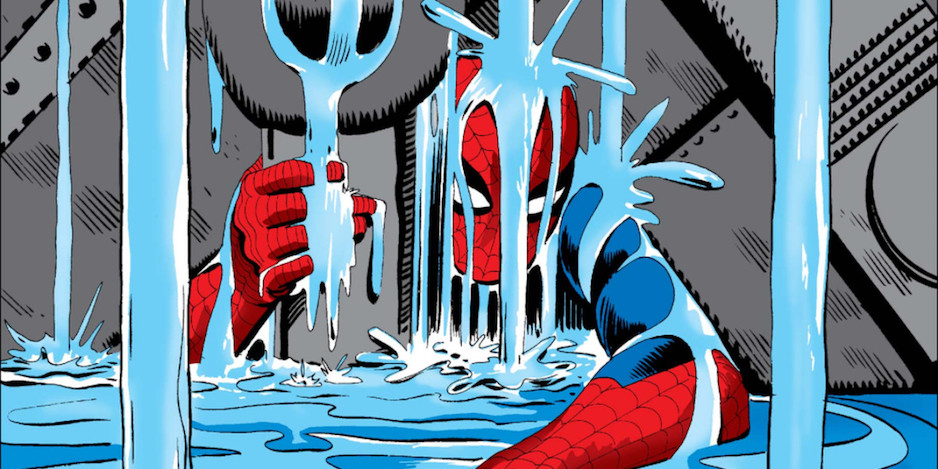
—
Paul Levitz (former president and publisher of DC Comics)
Steve was a master at creating worlds that seemed totally impossible yet real. He was an imaginative genius, and a pleasure to collaborate with. He asked that his work speak for itself and it does, with beauty, majesty and humanity. (For more by Levitz, click here.)
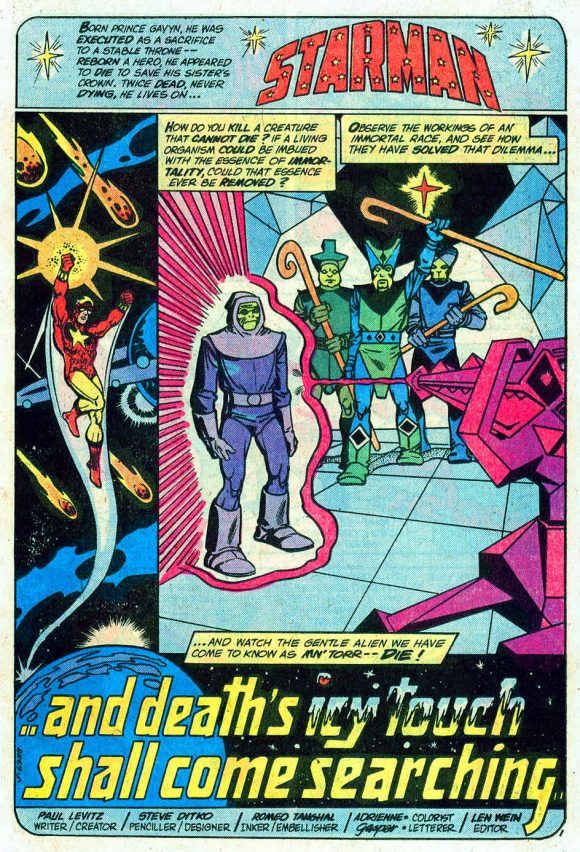
—
Fred Van Lente (Writer, Comic Book History of Comics; Hulk: Season One)
So let me tell you about the time I got hate mail from Steve Ditko.
But first: Ditko’s role in the creation of Spider-Man and Dr. Strange is justly praised, but let’s not forget his influence was everywhere in early Marvel. It was Ditko’s idea that Bruce Banner turns into the Hulk when he was angry – before, they couldn’t make up their mind if it was at night, or when Banner blasted himself with gamma rays again, or what. And the standard red-and-gold Iron Man armor design — the one Robert Downey Jr. wears in the movies — was Ditko’s.
I had my own pseudo-encounter with Ditko and his legendary prickliness by way of Dave Sim, of all people. Sim (Cerebus) had written me saying he enjoyed Ryan Dunlavey’s and my Comic Book History of Comics. He had been corresponding with Ditko on an unrelated matter and somewhat puckishly said he had forwarded the Marvel origin issue (this one) on to him to see what he thought.

Sim (and I) were both surprised when Ditko wrote him back right away, and Dave forwarded the reply along to me. I’ve attached it below. All it says is:
“I have no interest in that kind of material. It’s not relevant to anything I was involved in. It’s a personal fantasy.”
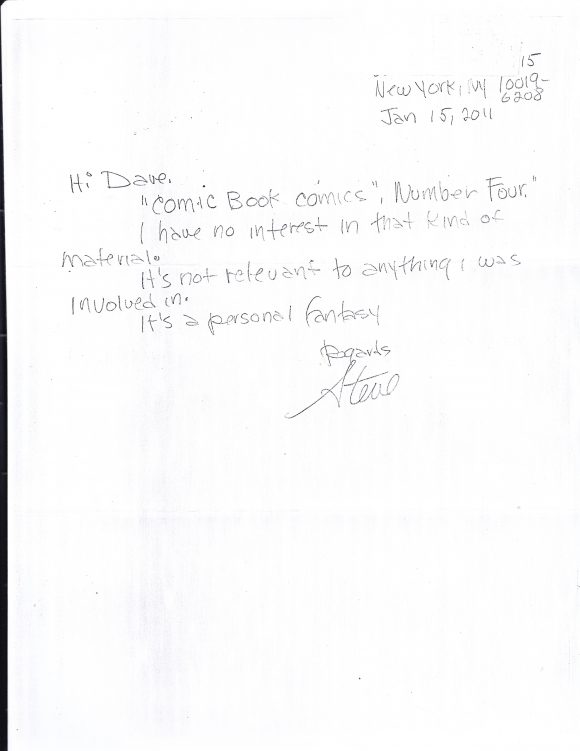
“It’s a personal fantasy” certainly baffles me. Our story, at least as it regards him, is all direct quotations from his later, 21st century writings and Objectivist political cartoons. Of course, I assume he didn’t even read it; he probably saw the cover and what it was about and dumped it in the trash.
He was a genius who will be remembered forever, and I have a letter from him denouncing my work! One of my cherished possessions.
RIP.
—
David Mack (writer/artist, Kabuki)
Steve Ditko created some of the most fascinating characters, in their designs and visual personalities. He brought a magic and a humanity even to his most surreal ideas.
I used to draw Spider-Man as a very young child and I imagine his Spider-Man design started many young kids drawing
—
Mick Gray (inker, Superman, Batman and Robin)
Back in the early ’90s, I had the HUGE honor of inking Steve on what might have been his last mainstream work, Infinitely Gentle, Infinitely Suffering: A Tale of Desaad!
I got the five pages of Ditko pencils, written by Mark Millar, and was pretty unsure how to handle them, they were pretty rough. My pal, and mentor, Frank Cirocco, tightened up some hands and other things enough for it to be more clear to me, but at the same time being careful NOT to change the “Ditko look.”
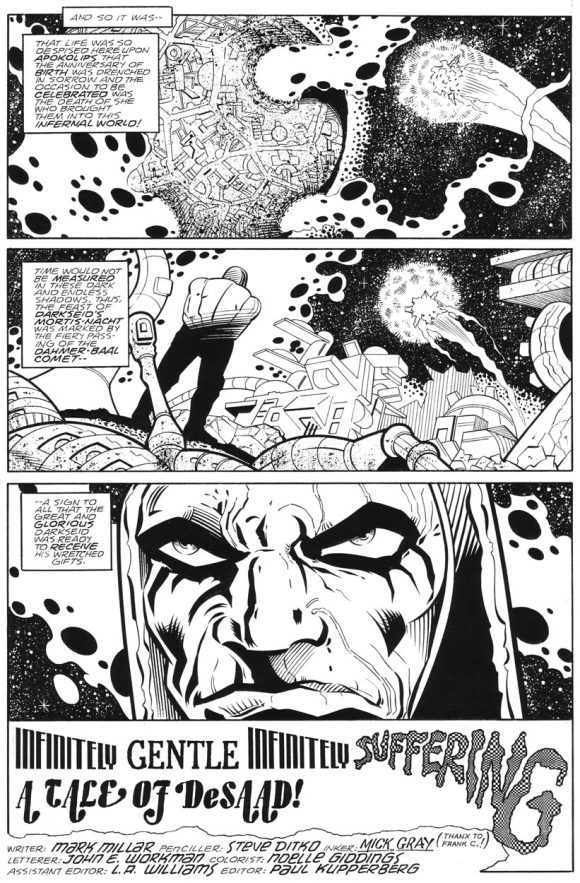
I finished it… but it got shoved in a flat file at DC Comics for about 10 years! It then FINALLY showed up as the last five pages of the Tales of the New Gods collection in 2008, and then the Steve Ditko Omnibus Vol. 2, in 2011.
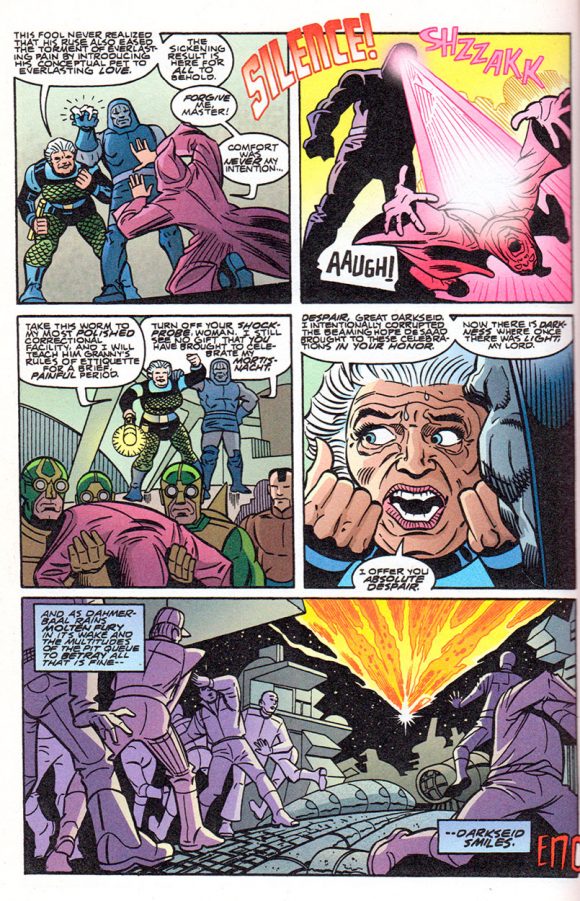
I feel sad about his passing but proud that I got to work, just a bit, with this master! He inspired an industry of artists and helped define an art form.
—
Ron Marz (writer, Green Lantern, Silver Surfer)
When I worked at CrossGen Comics back about 15 years ago, CrossGen owned MegaCon, the Orlando convention that has now grown into one of the biggest in the country.
Whatever his other faults, the guy who ran CrossGen, Mark Alessi, truly did love comics, especially the early Marvel stuff. He wanted to get Steve Ditko to be a guest at MegaCon. I think a few phone calls were made, trying to contact Ditko, none successful. Eventually, a letter was sent via FedEx, inviting Steve and offering him anything he wanted — appearance fee, first-class treatment all the way, anything at all.
I remember thinking it was a long shot, that we’d never even get a reply. But about a week later, a letter from Ditko arrived via regular mail. Alessi called me into his office to check it out. Ditko declined, of course, saying he wasn’t interested in such things. It was polite, even poetic, and written in this spidery handwriting, signed “Steve Ditko,” of course. I ran my fingertips over the writing, thinking this was as close as I was ever going to get to the man responsible for two of my favorite characters.
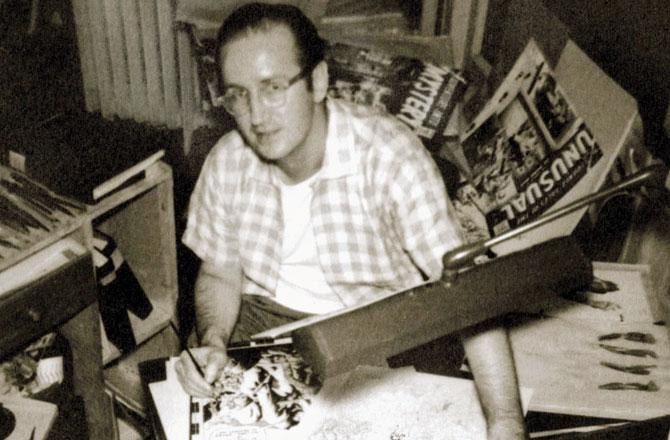
Of course, it was. I never met Ditko, never had any interaction with him at all. And I think I prefer it that way. I prefer the legend of Ditko to any sort of reality that meeting him would have imposed. For me, Ditko is that ’60s-era picture of him sitting at his drawing board. Ditko is the notion of him in his Manhattan studio for decades, creating the kind of idiosyncratic work he wanted to create. It’s the fantasy of him slipping quietly into a theater alone and watching the Doctor Strange film, and hopefully being pleased.
Ditko was Ditko to the end, utterly uncompromised. That’s the way it should be.
—
Mark Waid (writer, Dr. Strange, The Avengers)
I had the pleasure of working with Mr. Ditko once, years ago. Brian Augustyn and I had to assemble an issue of Action Comics Weekly practically overnight thanks to an editorial mishap, and one of us had the idea of teaming several different “old guard” pencillers with “new kids” artists — Kevin Nowlan inking Carmine Infantino, Ty Templeton over Curt Swan, that sort of thing.
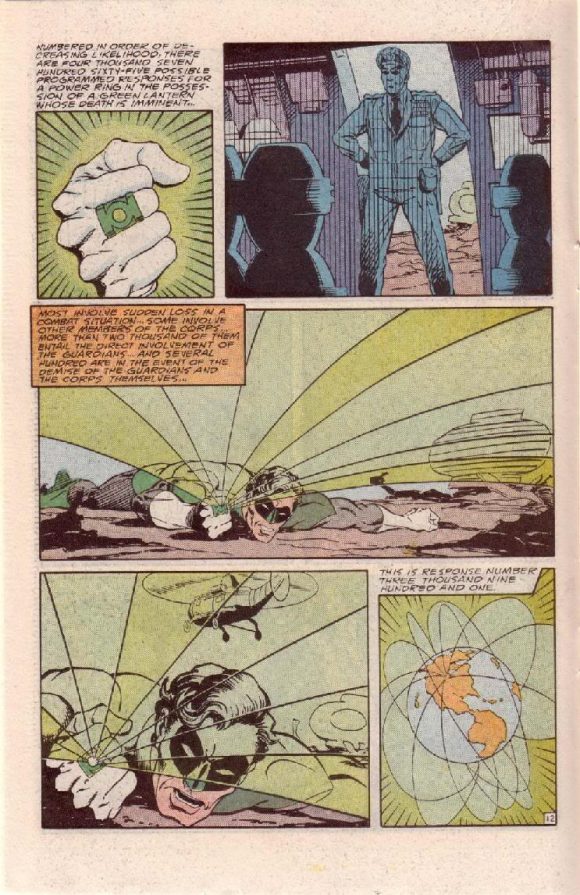
Ditko and Thibert
We knew we had to land pros who could do the work fast, and not only did Mr. Ditko (I can’t call him “Steve”) hit his chapter out of the park and turn his pages in first, he was complimentary of the inker we’d chosen (Art Thibert), which was a huge relief — the last thing we wanted to do was disappoint one of our heroes.
You’re going to hear the words “professional” and “gentleman” a lot over the next few weeks as people talk about Mr. Ditko, and there’s a reason — he was the absolute exemplar of both.
—
Dan Slott (writer, The Amazing Spider-Man, Iron Man)
Thank you for EVERYTHING, Steve Ditko. I love every bit of creativity and passion that you have brought into this world — and it has meant the world to me. (For more by Slott, click here.)
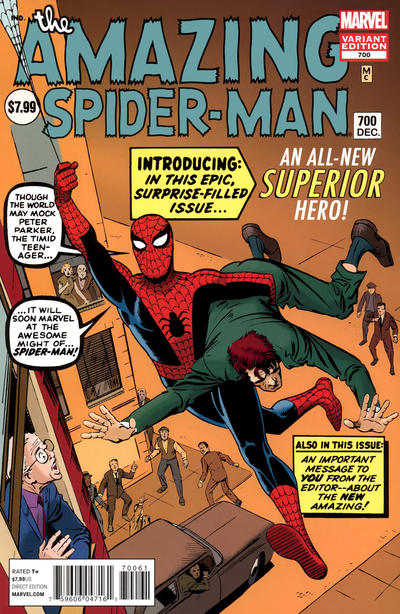
Ditko’s unused Amazing Fantasy #15 cover. Later used for Slott’s ASM #700.
—
MORE
— Complete STEVE DITKO Coverage. Click here.
— I MET STEVE DITKO. Click here.

Trackbacks/Pingbacks